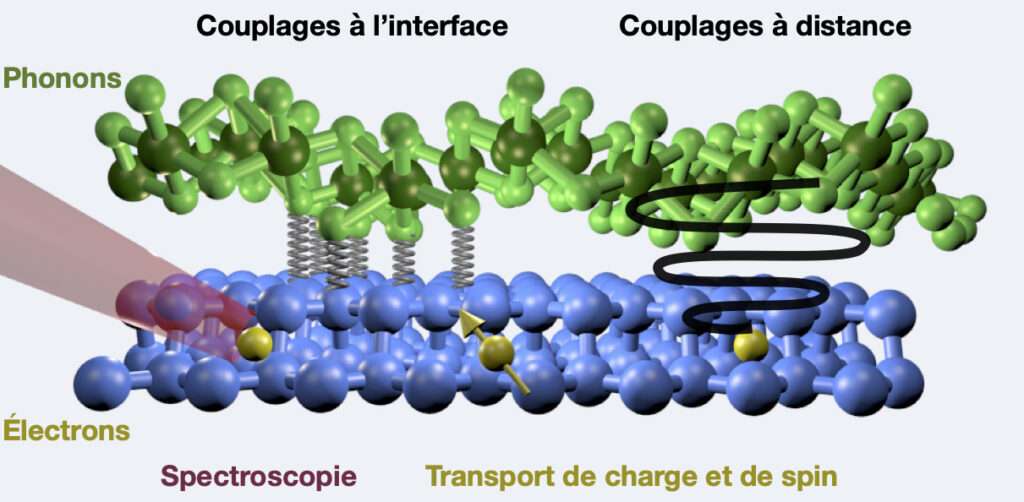Electron-phonon interactions in van der Waals heterostructures
Coordinator : Thibault Sohier
Van der Waals heterostructures are stacks of 2D materials that are now routinely fabricated by research teams around the world. Combining different 2D layers with different properties and interacting with each other leads to the emergence of fascinating physics and exciting application prospects.

In this project we are interested in modelling the behavior of two fundamental and intrinsic quasi-particles in those condensed-matter systems: electrons and phonons.
This is not a trivial task, as the properties of electrons (band structure, scattering lifetimes, …) and phonons (dispersions, lifetimes, …), as well as their interactions are changed by the presence of other layers. Remote long-range interactions couple charged excitations (plasmons, polar phonons or electrons) from different layers. Lattice mismatch between layers lead to the formation of Moiré patterns (the common periodic pattern between two different lattices), modifying the lattice potential felt by the electrons, and the force fields felt by atoms.
This all brings new physics, prominent exemples being the appearance of Dirac cone satellites in the band structure of BN-capped graphene or the emergence of superconductivity in magic-angle bilayer graphene, possibly related to the emergence of the so-called phasons (phonon modes involving the Moiré pattern rather than individual layers).
Van der Waals heterostructures are challenging to simulate, due to their inherent complexity and diversity. We aim at developing novel first-principles approaches to tackle those challenges and explore electron-phonon physics in those systems. In addition, an important aspect of the process is to work on translating the results into measurable spectroscopic and transport quantities in order to liaise with experiments. Thus, regular exchanges with experimental teams in L2C working on 2D materials are key.